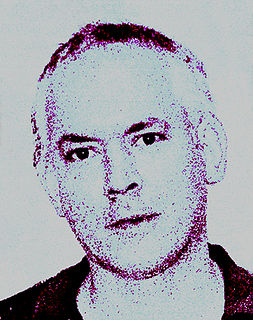Top 18 Quotes & Sayings by Philip Taaffe
Explore popular quotes and sayings by Philip Taaffe.
Last updated on April 17, 2025.
I will do a lot of research and create a lot of material for use in one painting. And then I go on discovering and working with a whole other range of material in another painting. I'm interested in a fairly comprehensive and orchestrated synthesis that might bring about a new situation consisting of this hidden material. I'm interested in hidden source material.
I don't want to fetishize the past. I want there to be a natural sequence coming out of a synthesis of the ideas and information that I gather together as a result of looking at things that are in the world. I'm trying to bring forward signs or signals based on what I see and my responses to these things. I'm trying to leave a trail that will be useful to other people in the future. It has to do with making something that contains a synthesis of the information, and then consequently to make one's deliberations visible, to allow other people to follow them. That's how I see my role.
There is a tendency in my work toward minimalism, in terms of stripping away the unnecessary. I am seeking a tightly ordered gestalt, usually. I've always felt a strong affinity towards Mondrian's work. I understand the importance of those subtle planar and linear modulations he made in the course of building up the incredible visual tension in his work.
For me, the whole idea of the radically new is tied to a close reconsideration of older sources. I like to give myself over to those sources, as points of origin, in order to bring things forward. My approach requires me to internalize my sources as much as possible in the hope that new themes might emerge. The material has to be internalized in order for it to live again. Ultimately, paintings reveal themselves on the basis of what they are. They are inseparable from the physical process that goes into their making.
I'm not so interested in this series of ruptures, where minimalism took over pop art, and then neo-expressionism was a triumph over that. I'm not interested in rupture - I'm interested in healing, bringing things together, building bridges. Not dismissing what has come before as a kind of modernist precedent, where one thing has to be broken in order to achieve something else. I don't believe in that kind of attitude. I think we're beyond that at this stage.
What excites me and what I find most compelling is clearly not what excites other artists. It comes from my own idiosyncratic background and what I'm drawn to. Maybe this is a result of having lived in Naples during a formative period of time. I'm interested in telling a unique story in a very intense way.
I have a fairly unwieldy set of concerns that go into determining what I do in the paintings, such as the history of the decorative, patterns of cultural migration, Islamic art and design, Byzantine architecture, the annals of natural history, as well as contemporary painting. All of these things are filtered through my own sense of cultural urgency. How I proceed with the work has to do with how I respond to this instinctively chosen mass of materials. I'm weighing many things and making many decisions before I even get started on a painting.
I'm trying to make a primitive painting. I'm trying to summon the archaic. I want to enter into a primitive situation. This is my protest against the sensory deprivation that we experience, which is due to this tendency towards globalization, towards homogenization, towards the generic - a technological standard rather than an aesthetic standard. I'm mining history, trying to regenerate a pictorial situation that is more humanistic. It's not about commodification, it's not about fitting into some sort of corporate structure. It's opposed to that direction.
Design is meant to grab you and win you over. It is meant to function in a way so as to make life easier. Obviously painting has to do with something quite beyond that. It's not about communication per se. It doesn't necessarily telegraph anything. It's more about understanding who we are and where we come from.

















